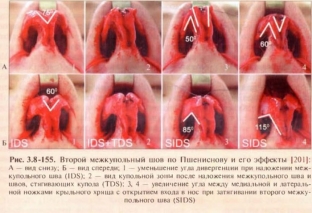Rhinoplasty is one of the final and rather technically complex stages of rhinoplasty. Quite often, patients turn to plastic surgeons with the only desire to change the tip of the nose, for example, in cases where the patient has an upturned or too flattened tip of the nose. To date, there are several different techniques for surgical intervention on the tip of the nose, allowing to achieve the most positive result for the patient. One of the most effective and aesthetically safe techniques for surgical intervention on the tip of the nose is non-destructive plastic tip & nbsp; nose.
In what cases can non-destructive rhinoplasty be used
Of course, only the desire of the patient to change the appearance of the nose through surgery on the tip of the nose is not an indication for rhinoplasty. An objective assessment by a plastic surgeon of the condition and appearance of the tip of the nose, compared with the wishes of the patient, allows you to choose the optimal method and volume of surgical intervention for rhinoplasty. Most often, the reason for changing the cartilage of the tip of the nose can be:
- change the height of the tip of the nose;
- changing the rotation of the tip of the nose;
- change the spacing between defining points of the tip of the nose;
- decrease in the fullness of the tip of the nose;
- formation of supratip fracture;
- change in the relationship between the columella and the alae;
- correction of the asymmetry of the tip of the nose.
The essence of the method of non-destructive rhinoplasty
The method of non-destructive rhinoplasty was proposed in 1994 by J. Tebbetts, who established the sequence of actions of a plastic surgeon when shaping the tip of the nose without disturbing the structural continuity of the lower lateral cartilages. The method of non-destructive rhinoplasty consists in the use of suture technologies in primary rhinoplasty without the use of "visible" rhinoplasty. transplants. The method is based on the use of sutures according to the principle of force vectors and the use of grafts that do not come into contact with the skin. The method of non-destructive rhinoplasty allows avoiding those deformations of the nose that occur during the application of notches, excision of cartilage strips and other techniques for correcting the tip of the nose.
Non-destructive rhinoplasty technique: operation steps
Technique non-destructive rhinoplasty consists of 4 main stages. At the first stage of the formation of the tip of the nose, symmetrical strips of the lateral crura of the lower lateral cartilages are created by excising their sections to create symmetry. Then, at stage 2, the shape of the medial crura is changed to achieve symmetry of the domes, and a special suture is applied to control the base of the medial crura and fix them. At the 3rd stage of non-destructive rhinoplasty, a tightening suture is applied to the lateral crura, which, when tightened evenly, forms and repositions the lateral crura. With it, you can change the projection of the tip of the nose, its rotation up or down. Next, tightening mattress sutures are applied to the domes, which allow you to accentuate the tip of the nose and increase its projection. At the 4th stage of non-destructive rhinoplasty, the tip complex is placed to ensure its planned projection and rotation. For this purpose, sutures are used between the cartilage of the nasal septum and the medial crura.

Result of non-destructive rhinoplasty
Suturing on the principle of force vectors in non-destructive rhinoplasty allows the maximum preservation of all structures that form the framework of the nose. Dynamic control of the shape of the tip of the nose during the non-destructive rhinoplasty method allows for the most predictable rhinoplasty result, and also provides the ability to change the result if the patient is not satisfied. Thus, non-destructive rhinoplasty is currently the best rhinoplasty method that allows you to effectively correct the shape of the tip of the nose and achieve the maximum aesthetic result.







Add a comment